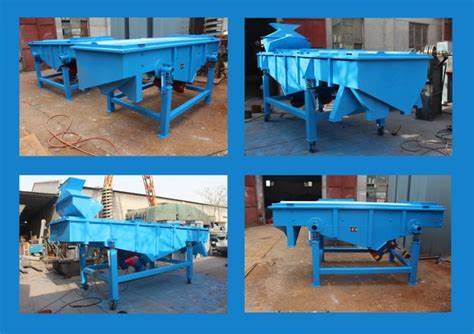Sand screening is a crucial process in various industries, including construction, mining, and agriculture. The efficiency and effectiveness of this process greatly depend on the equipment used. One of the most common and efficient tools for sand screening is the vibrating sand screening machine. In this comprehensive guide, we delve into the science behind these machines, exploring their working principles, components, and the factors influencing their performance.
Working Principle of Vibrating Sand Screening Machines
At the heart of vibrating sand screening machines lies a simple yet effective principle: vibration. These machines utilize vibrations to separate particles of different sizes, ensuring that only the desired size of sand passes through the screening mesh. The process begins with the introduction of sand onto the screening surface, which is typically a mesh or perforated plate.
As the machine vibrates, it imparts kinetic energy to the sand particles, causing them to move and separate based on their size and shape. Smaller particles tend to settle into the gaps of the mesh or fall through, while larger particles remain on the surface. This continuous shaking action ensures thorough screening of the sand, removing any oversized or undersized particles.
Components of Vibrating Sand Screening Machines
- Vibrating Motor: The vibrating vibrating screen for silica sand is the powerhouse of the screening machine. It generates the vibrations necessary for the screening process. These motors are typically mounted on the side or underneath the screening surface and can be adjusted to control the intensity and frequency of vibrations.
- Screening Surface: The screening surface, usually made of mesh or perforated plate, is where the actual separation of sand particles occurs. It is essential to select the appropriate screening surface with the right mesh size to achieve the desired level of screening efficiency.
- Frame and Support Structure: The frame provides structural support to the screening machine and ensures stability during operation. It is often made of sturdy materials such as steel to withstand the vibrations generated by the vibrating motor.
- Eccentric Weights: Some vibrating sand screening machines are equipped with eccentric weights attached to the vibrating motor. These weights create an unbalanced force, resulting in circular vibrations that enhance the screening process.
Factors Influencing Performance
- Vibration Frequency: The frequency of vibration plays a crucial role in determining the efficiency of the screening process. Higher frequencies are generally more effective in separating finer particles, while lower frequencies are better suited for larger particles.
- Amplitude: The amplitude of vibration refers to the intensity or magnitude of the vibrations generated by the vibrating motor. A higher amplitude can improve the screening efficiency by imparting greater kinetic energy to the sand particles.
- Screening Surface Design: The design and characteristics of the screening surface, such as mesh size and material, significantly influence the performance of vibrating sand screening machines. Choosing the right screening surface for the specific application is essential for achieving optimal results.
- Material Properties: The properties of the sand being screened, including particle size distribution, moisture content, and abrasiveness, can affect the performance and longevity of vibrating sand screening machines. It is crucial to consider these factors when selecting and operating the equipment.
Conclusion
Vibrating sand screening machines are indispensable tools in various industries for efficiently separating sand particles of different sizes. Understanding the science behind these machines, including their working principles, components, and factors influencing performance, is essential for maximizing their effectiveness. By optimizing vibration frequency, amplitude, screening surface design, and considering material properties, operators can ensure efficient and reliable sand screening operations, ultimately contributing to improved productivity and quality in their respective industries.
Top of Form

